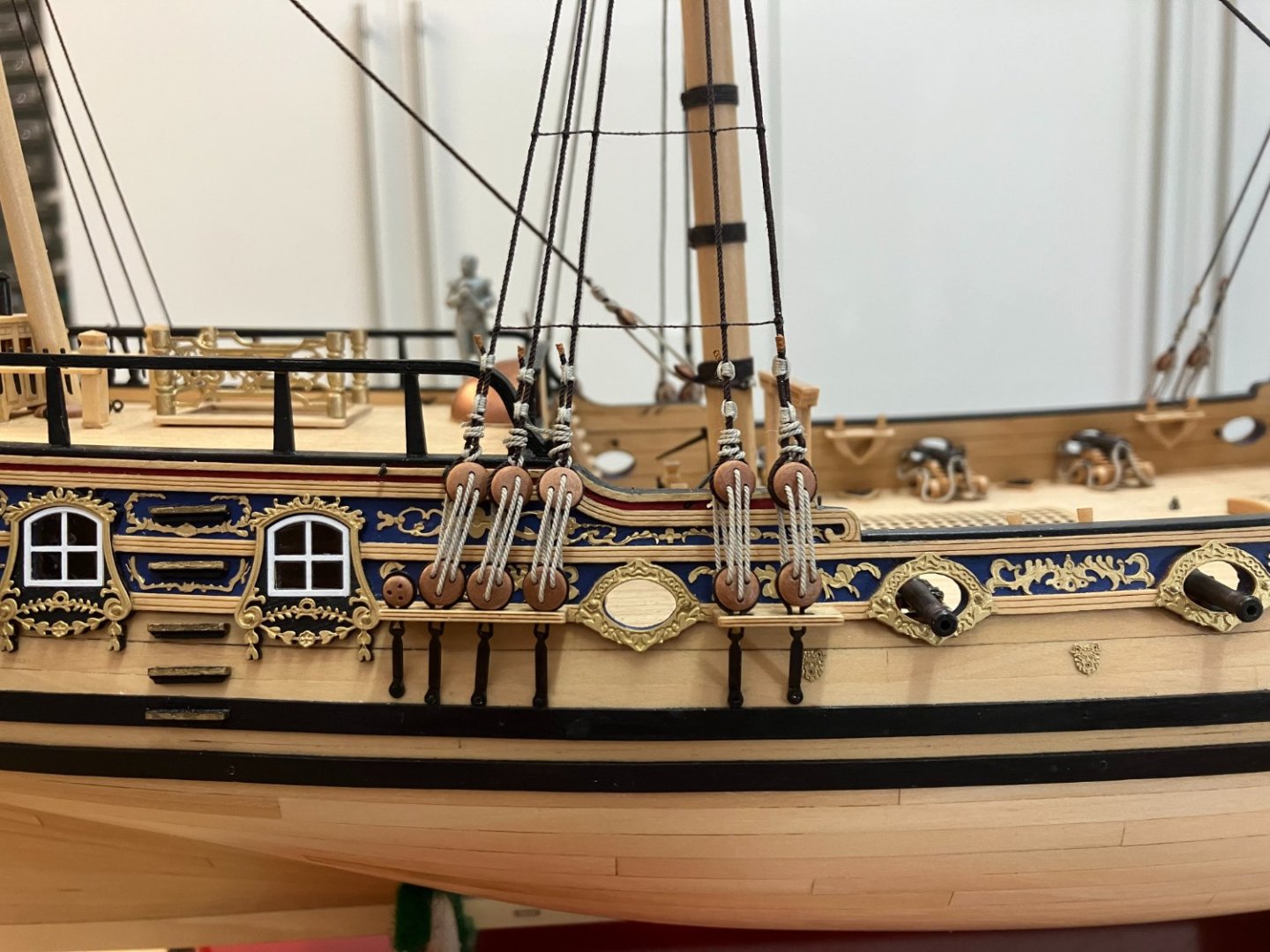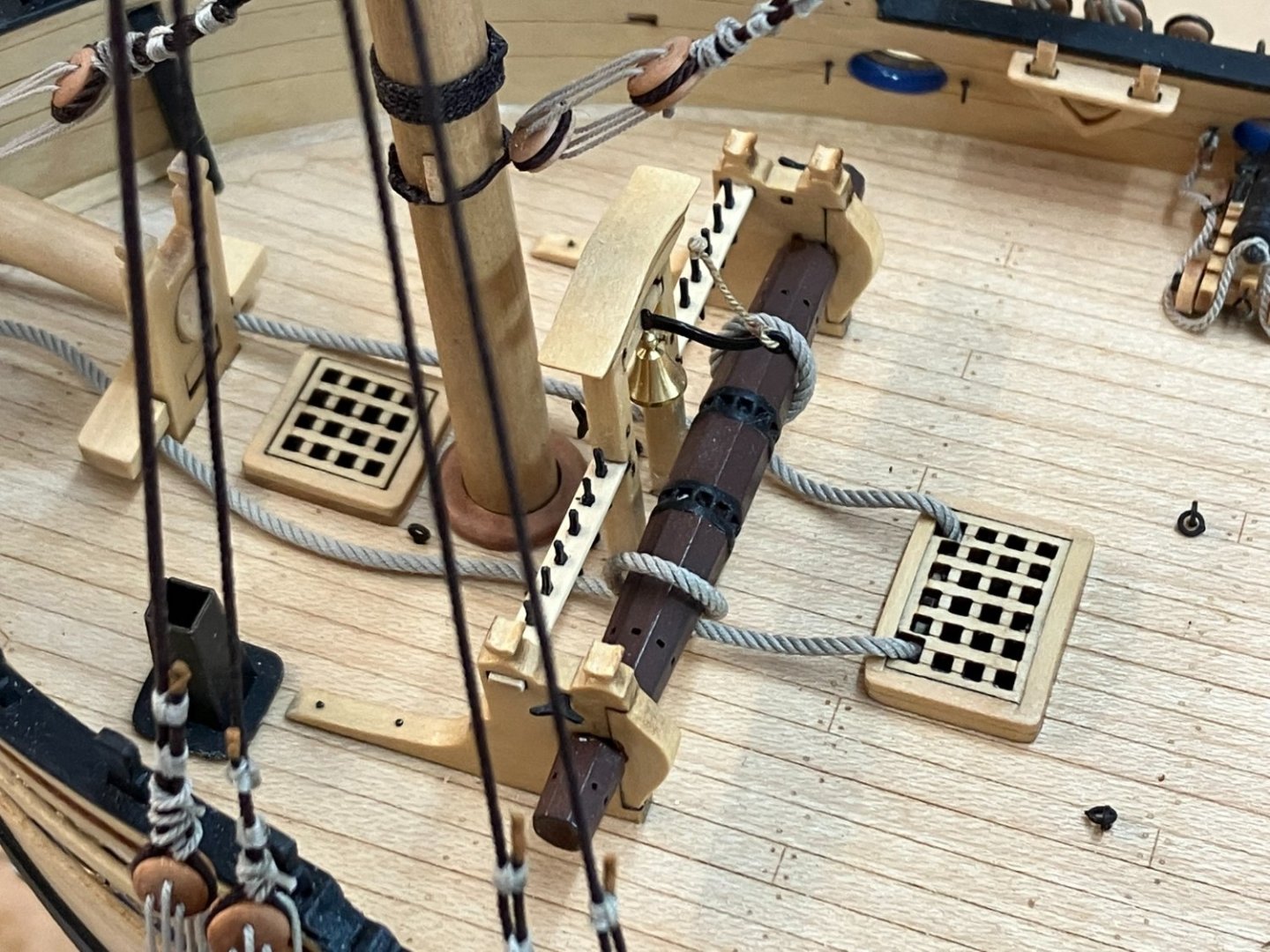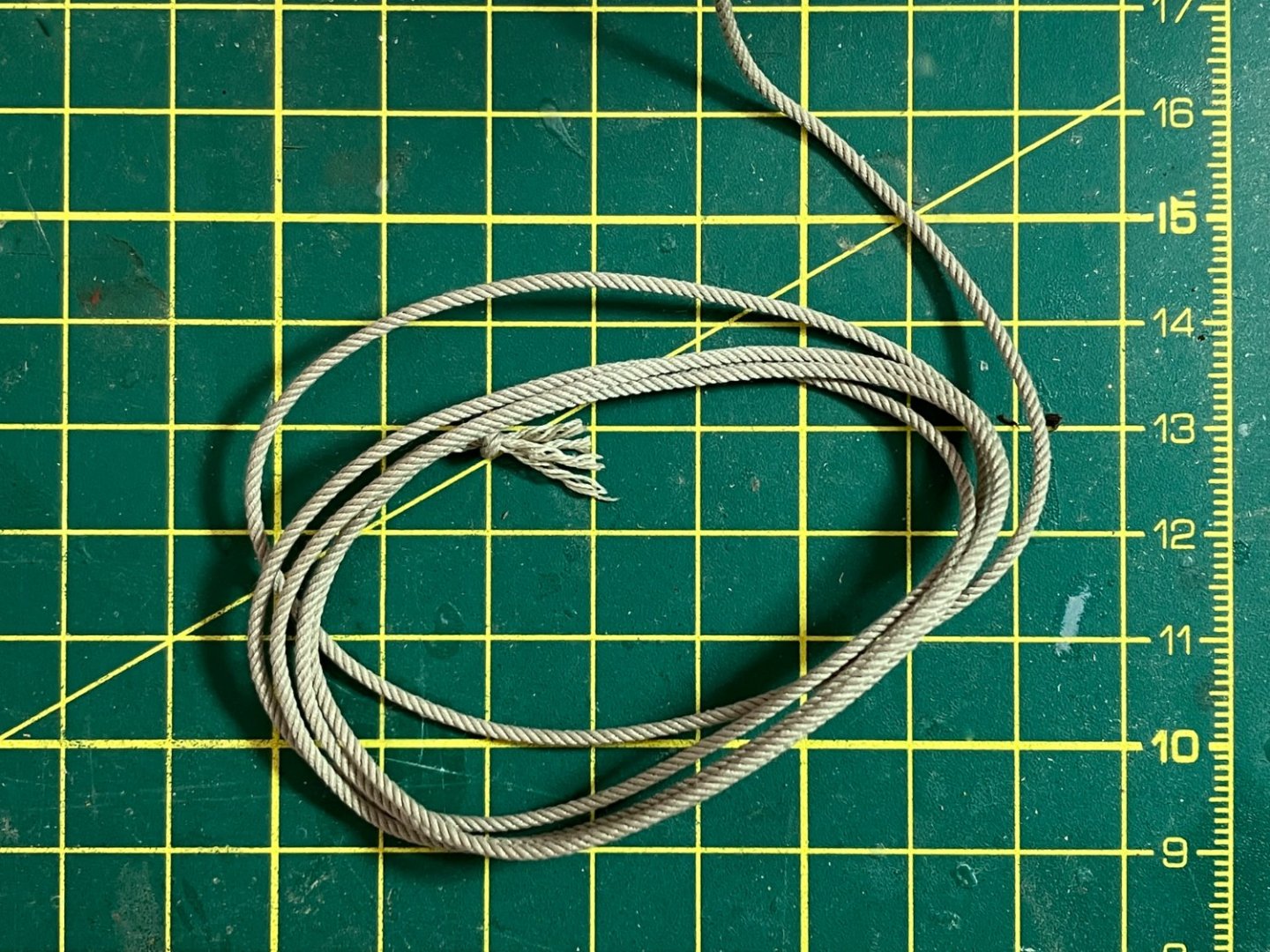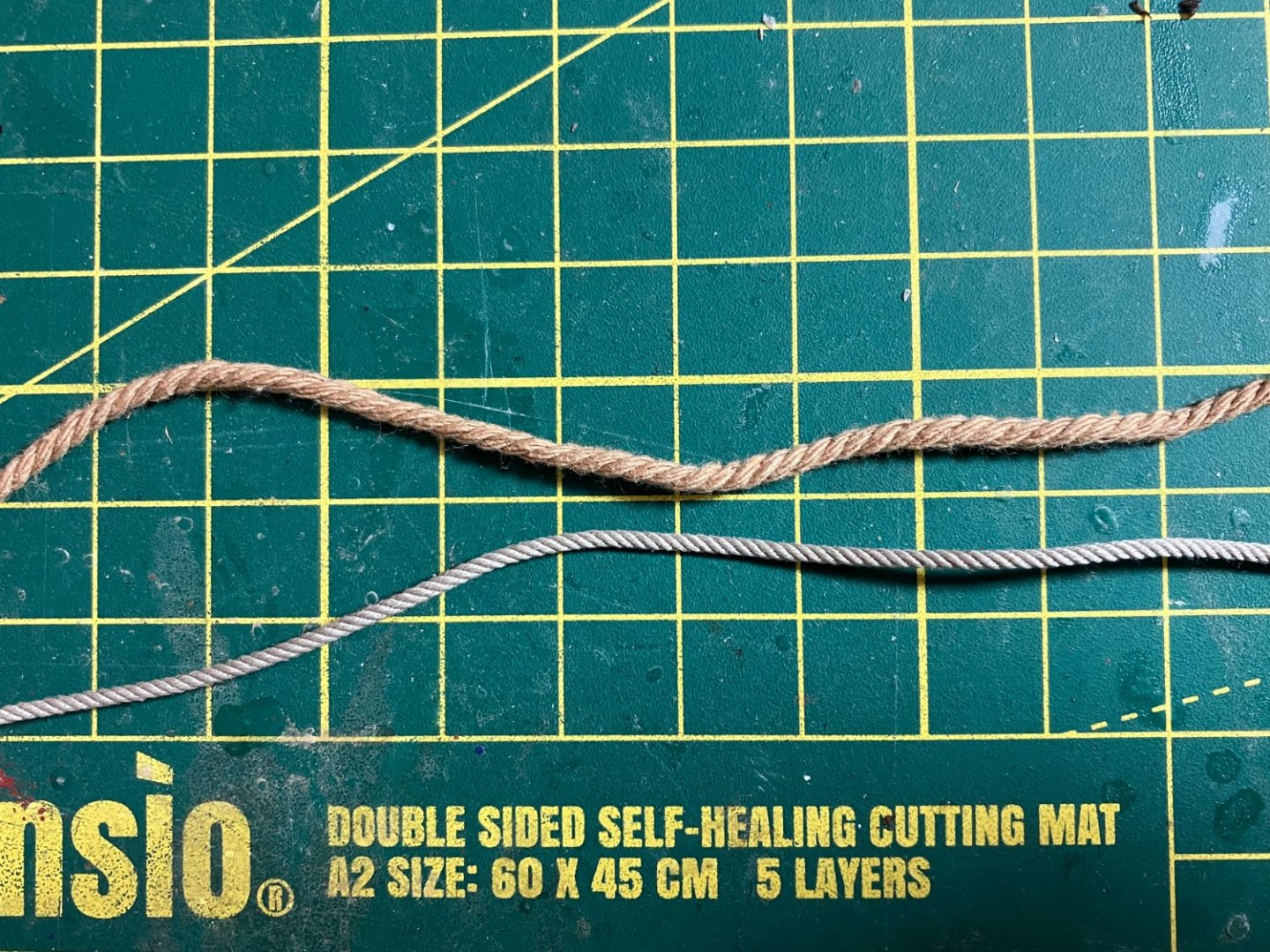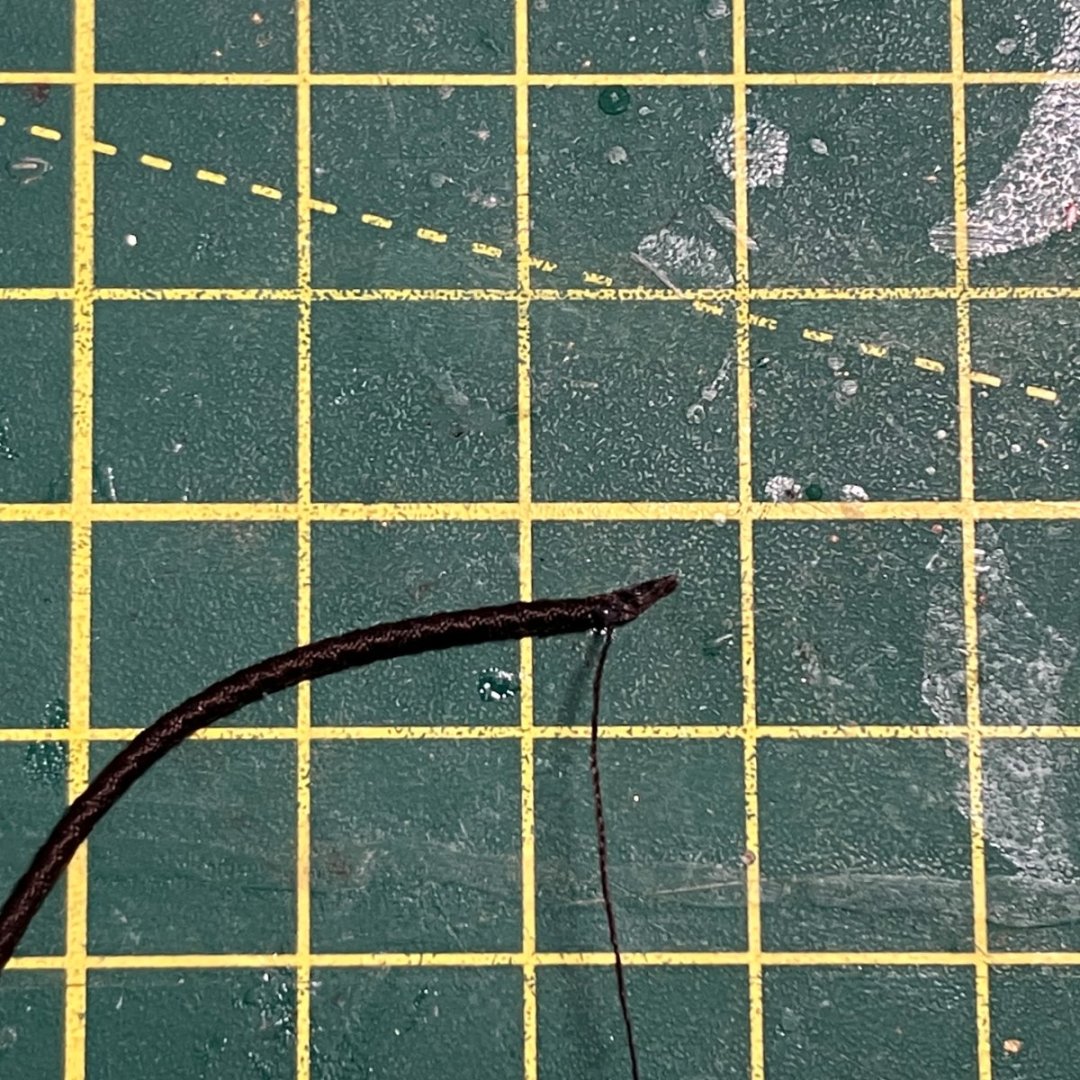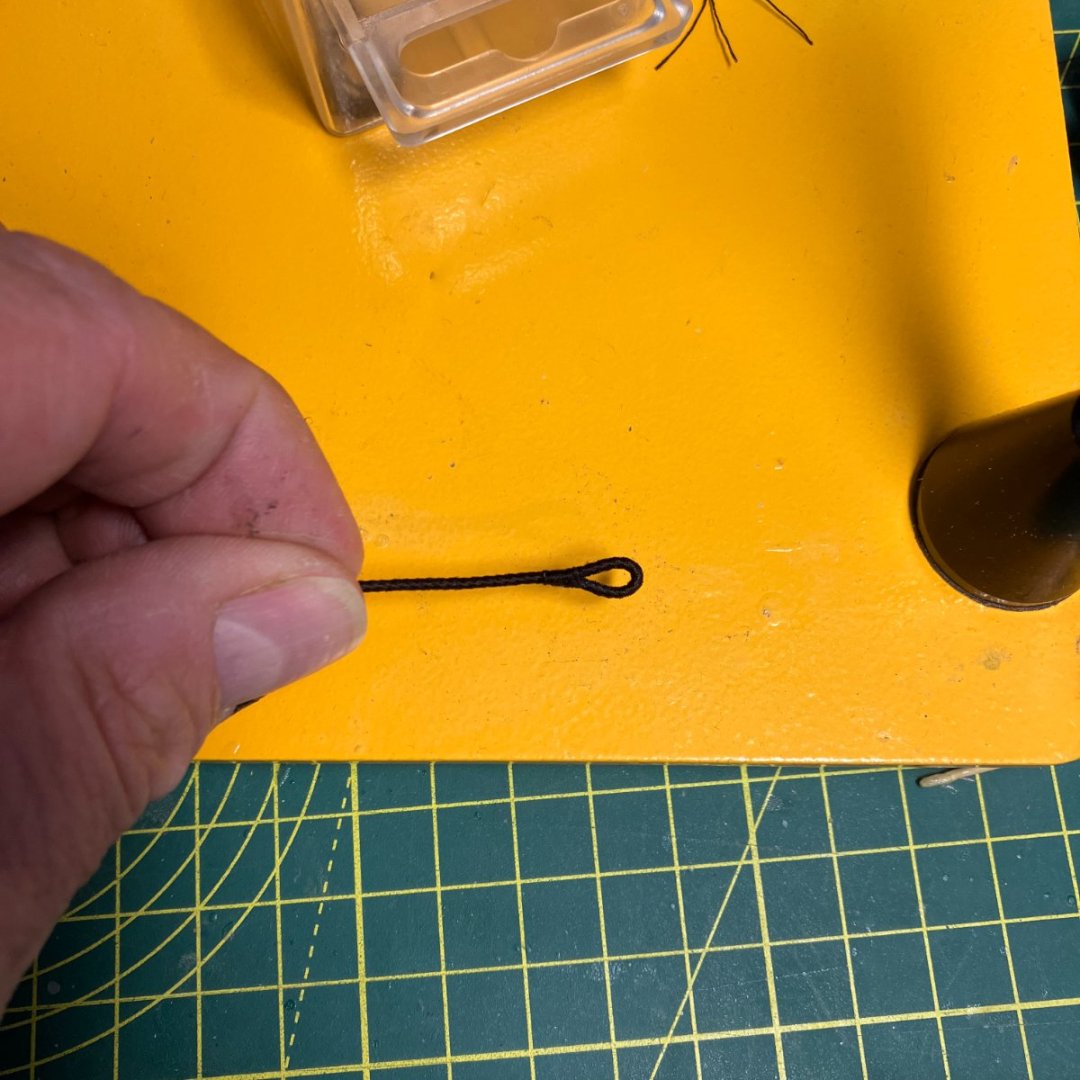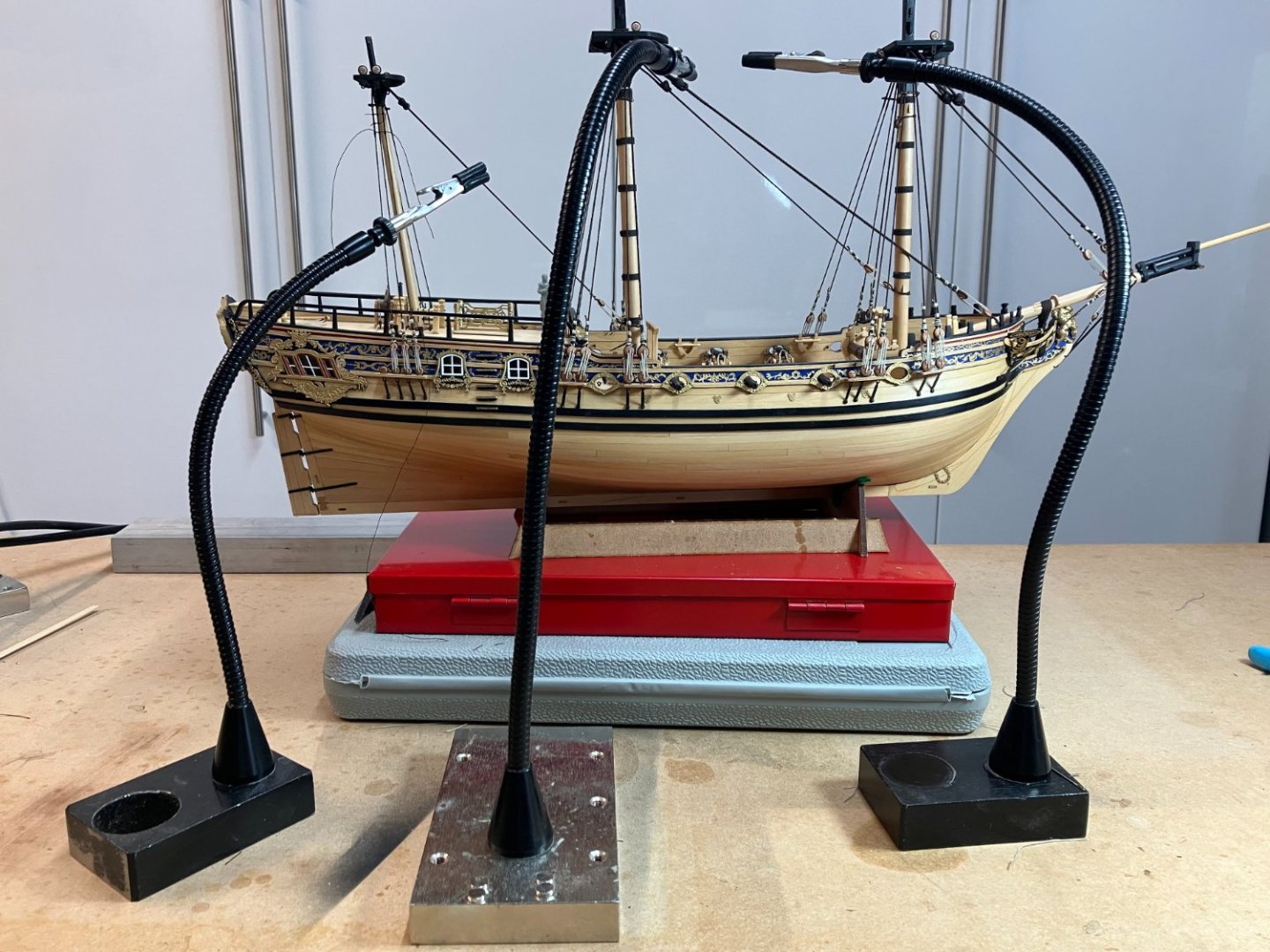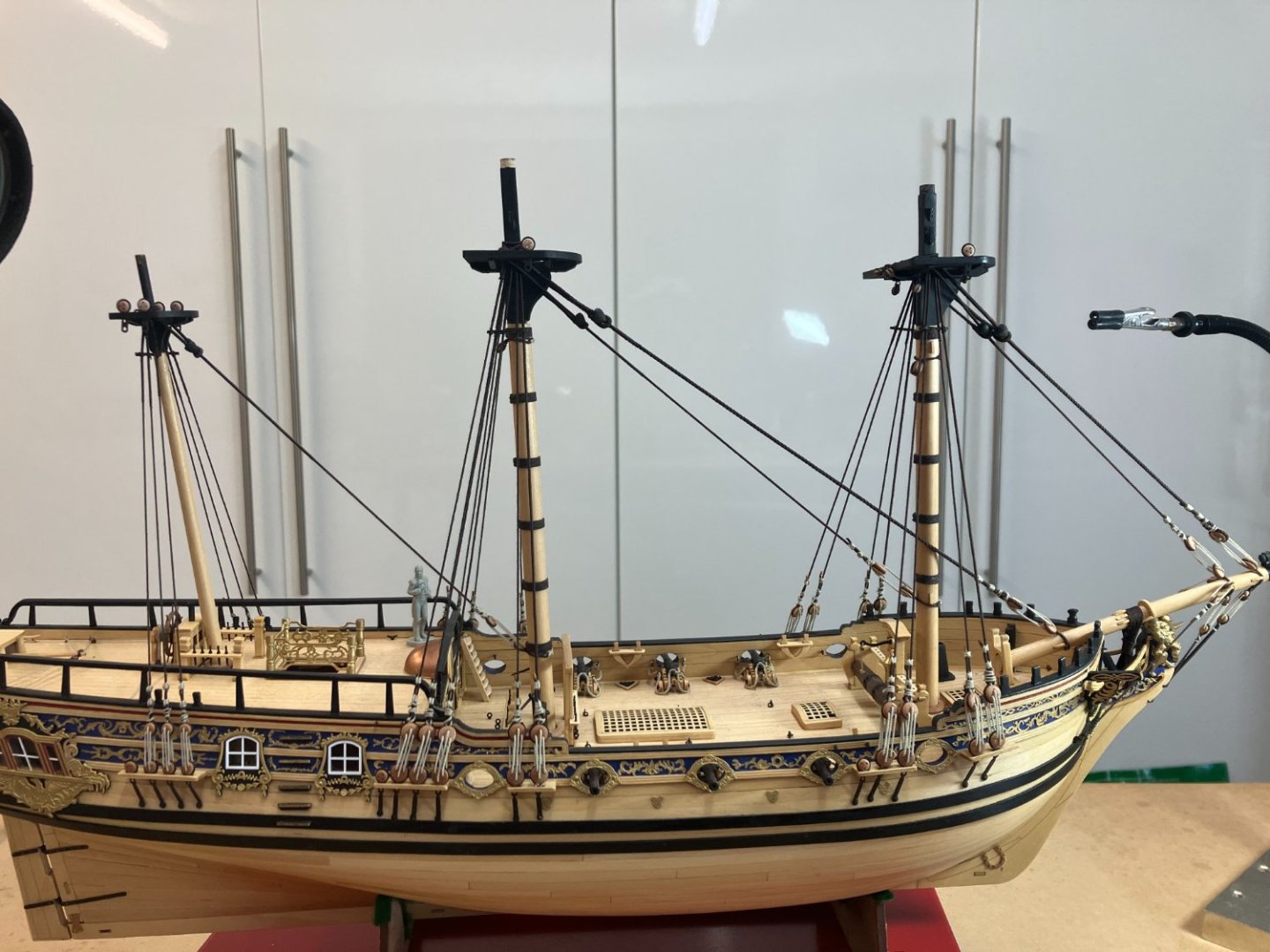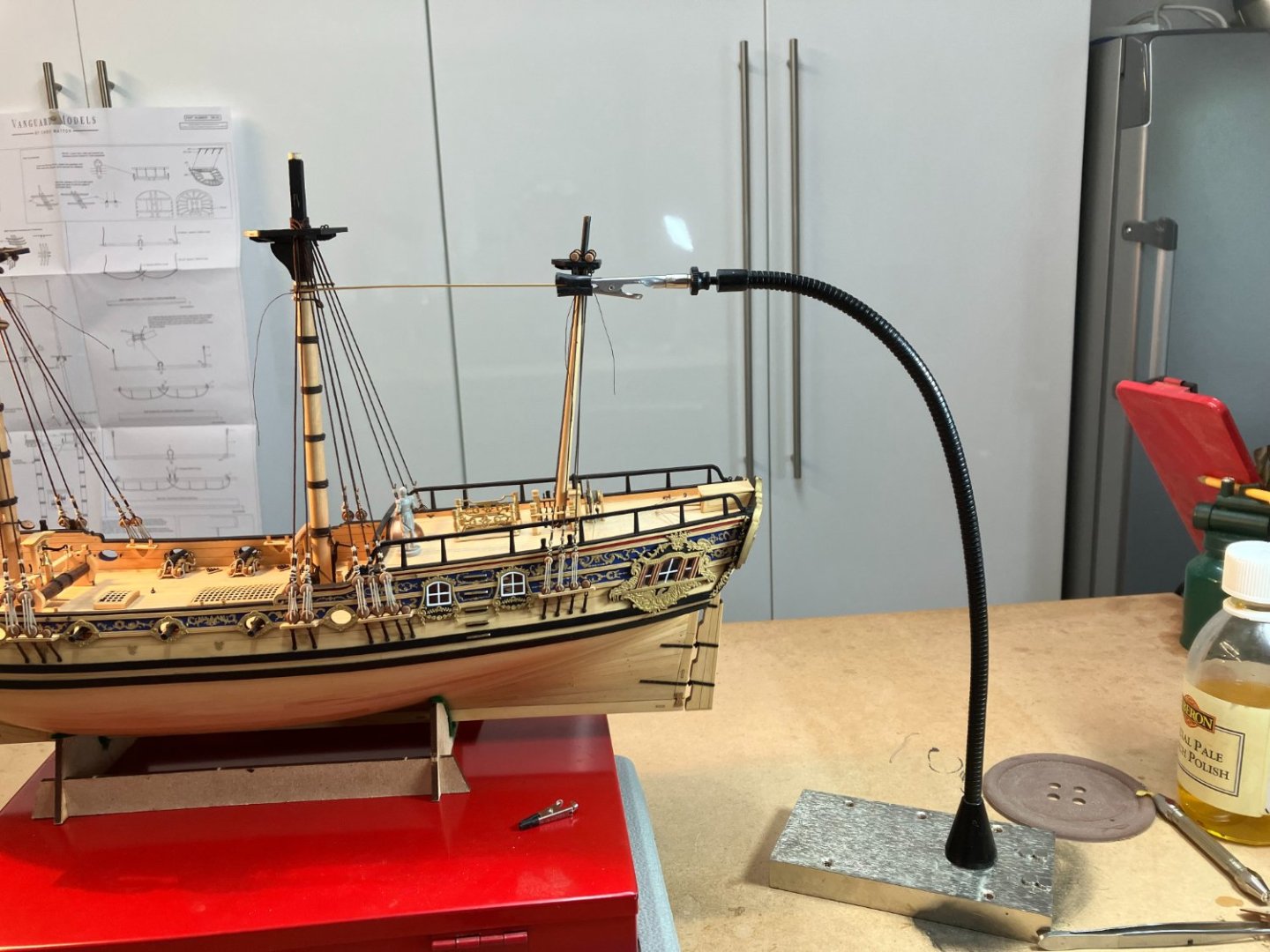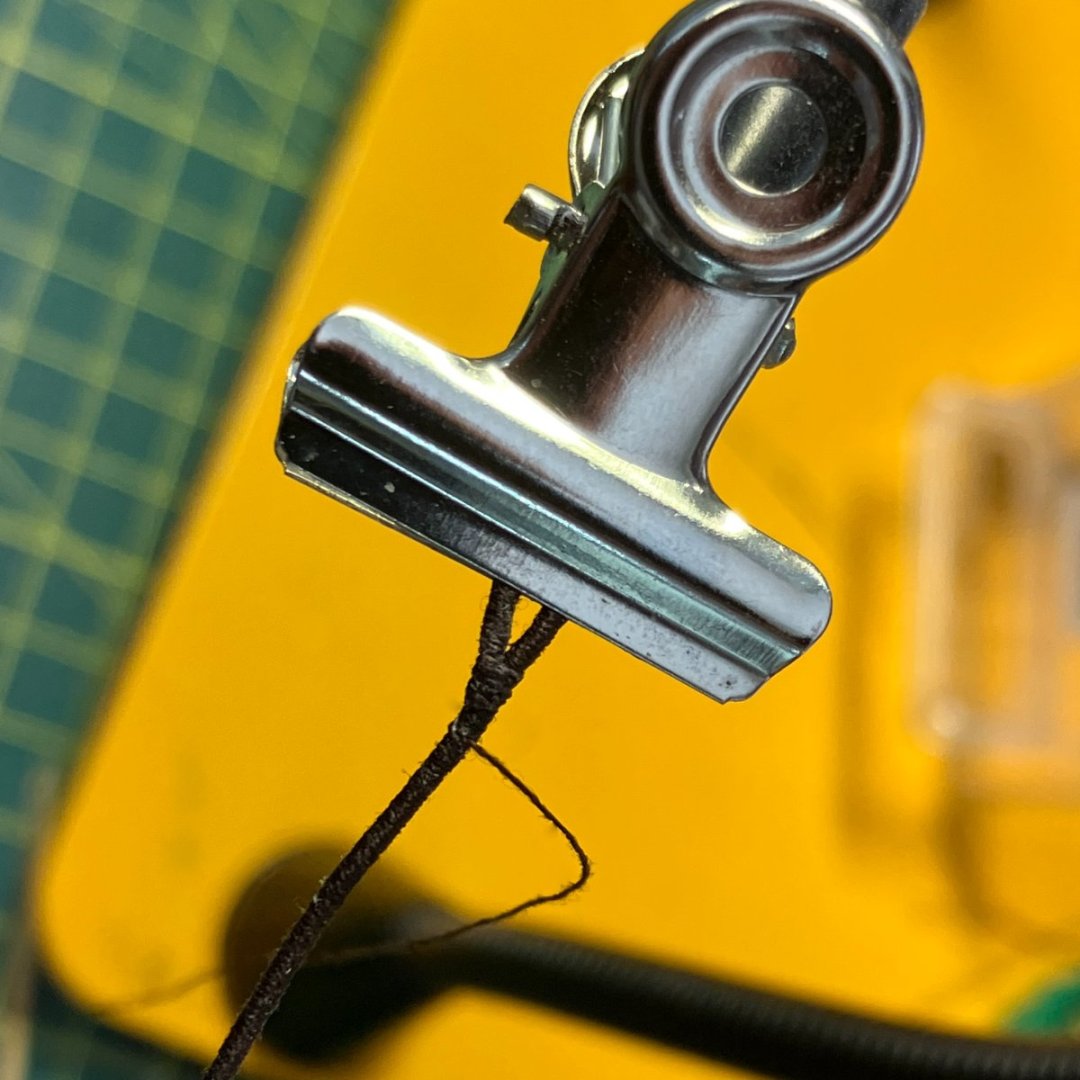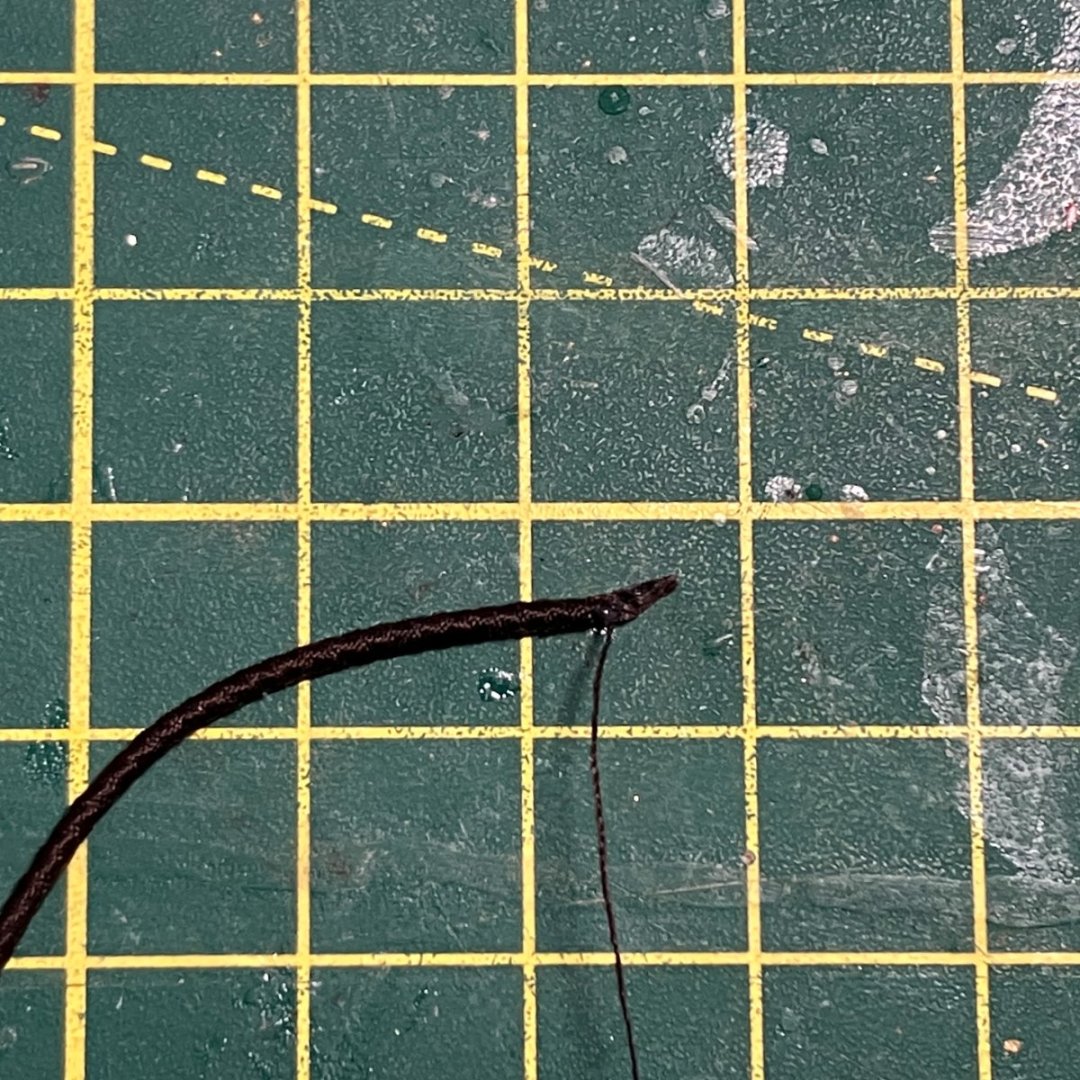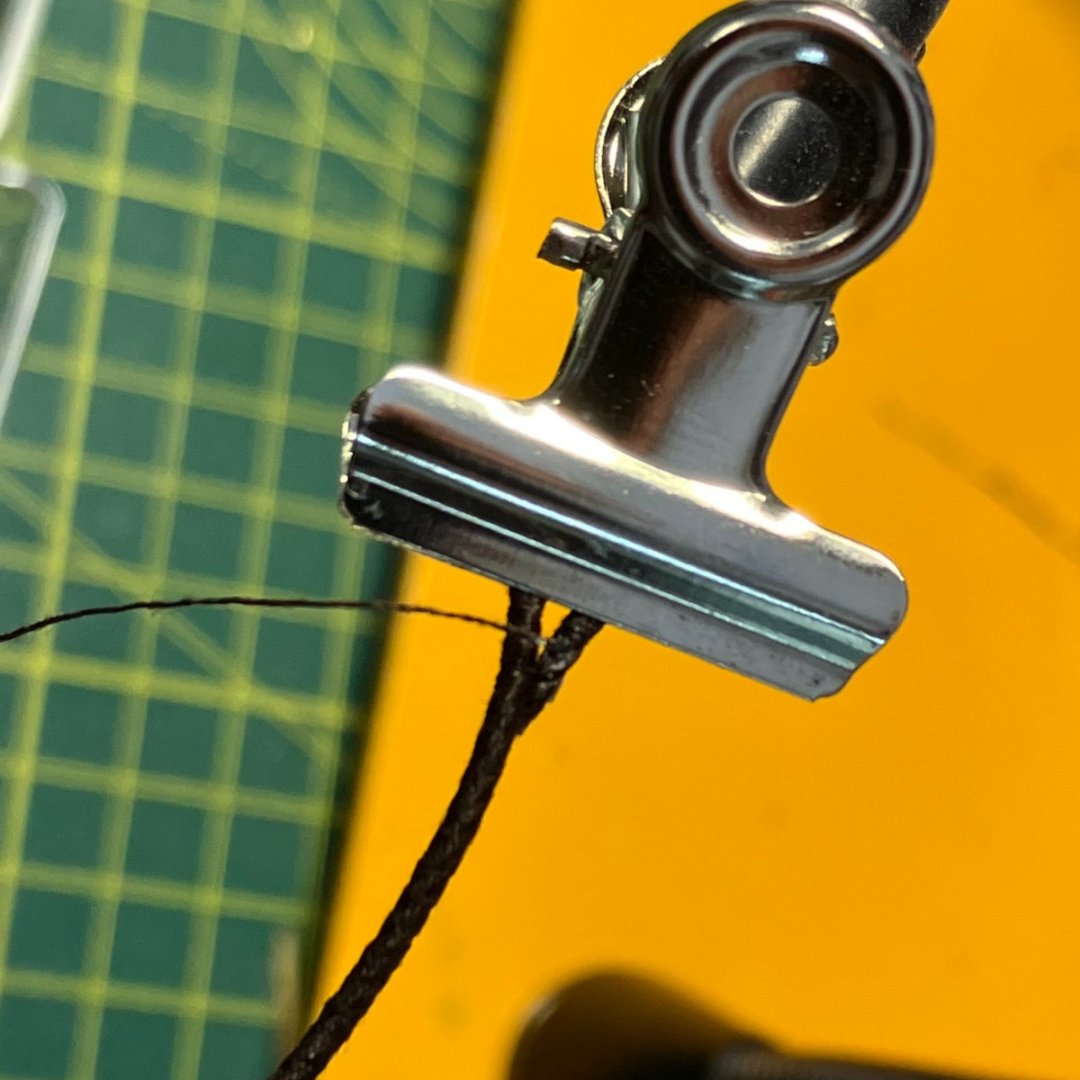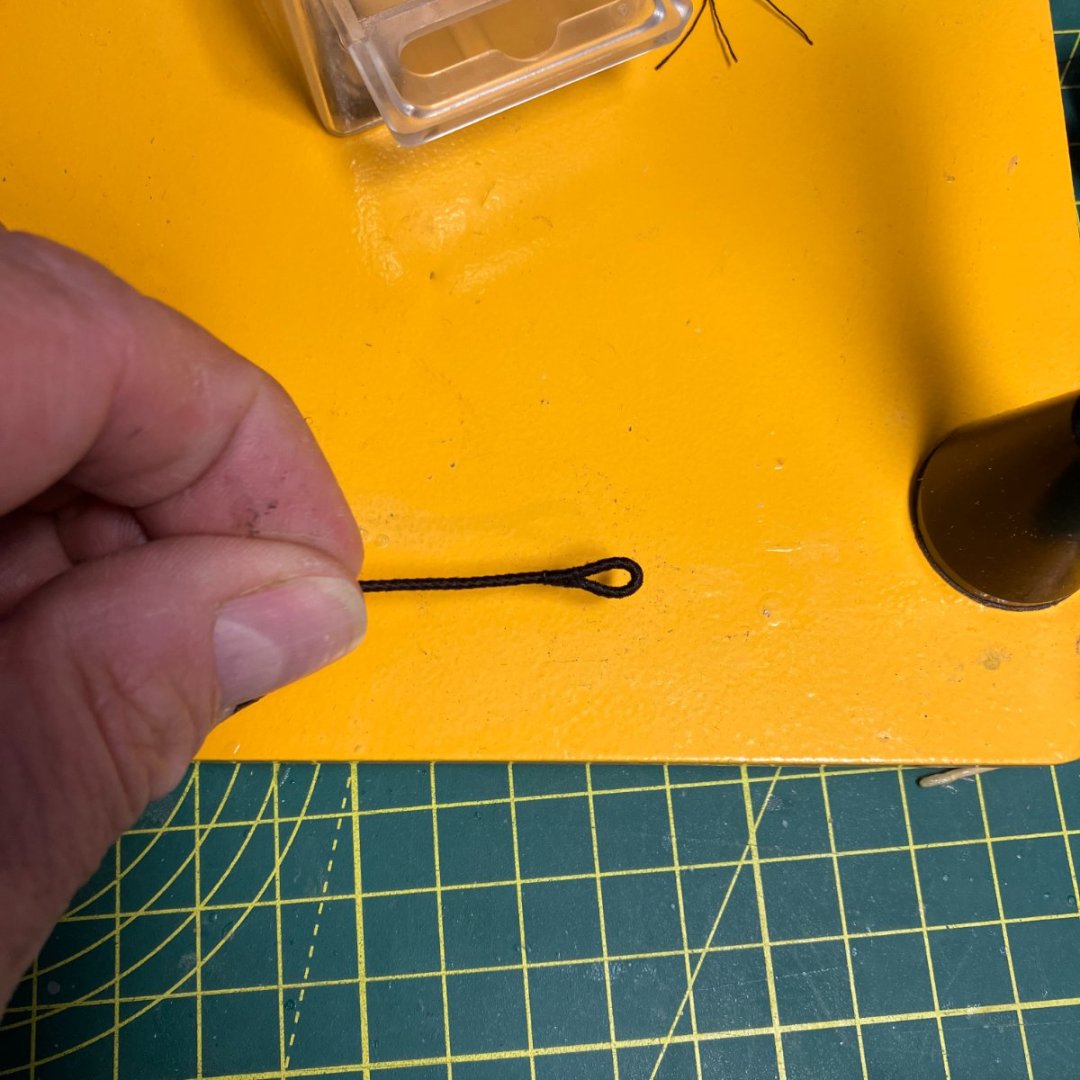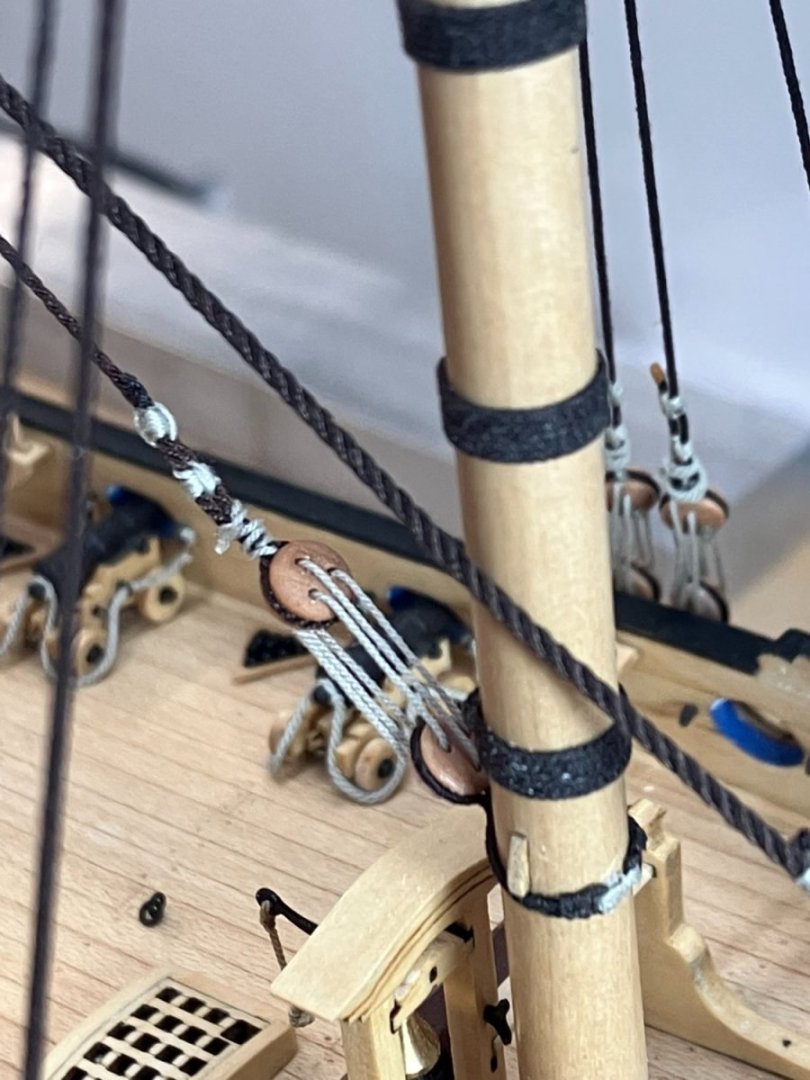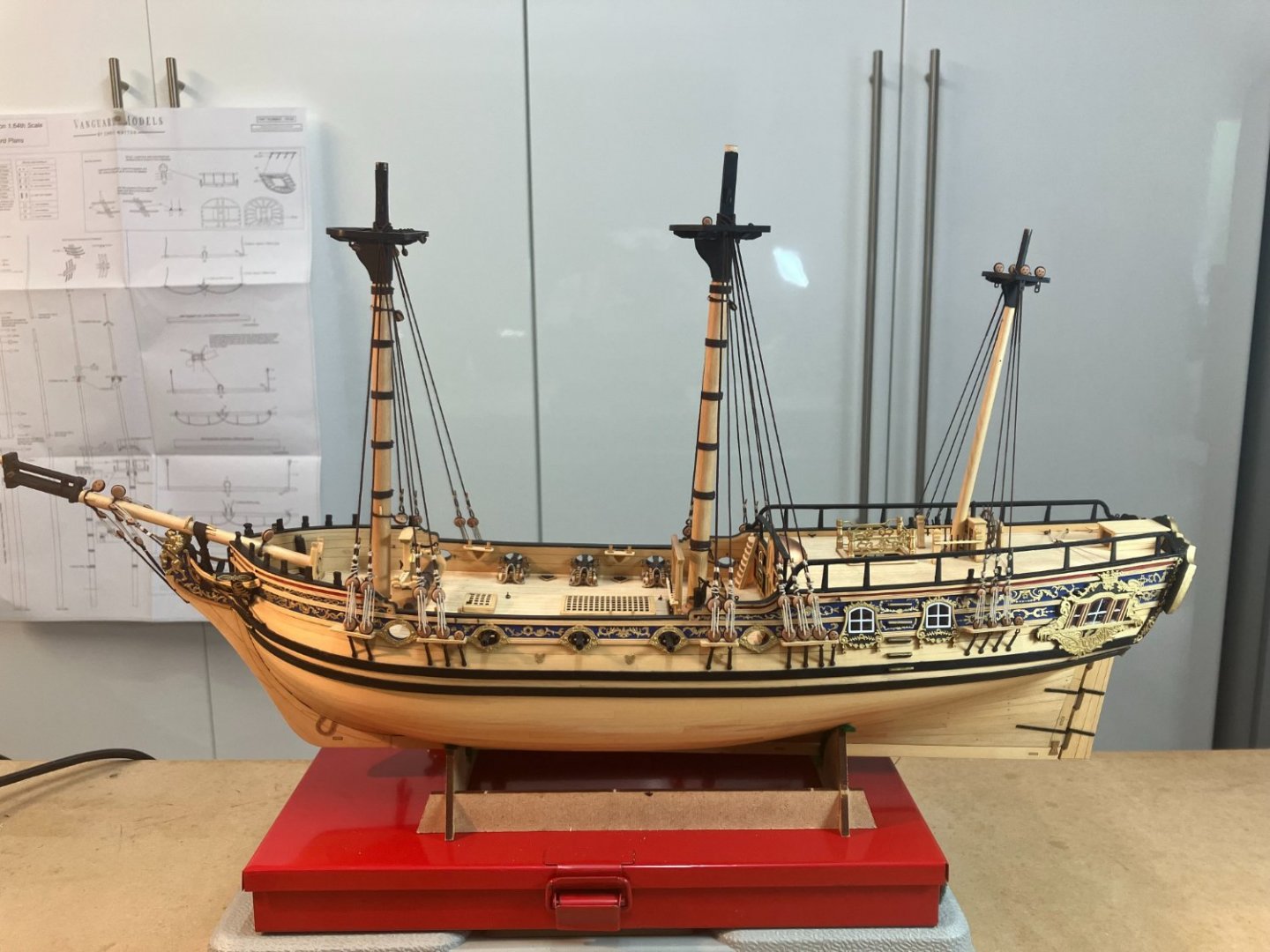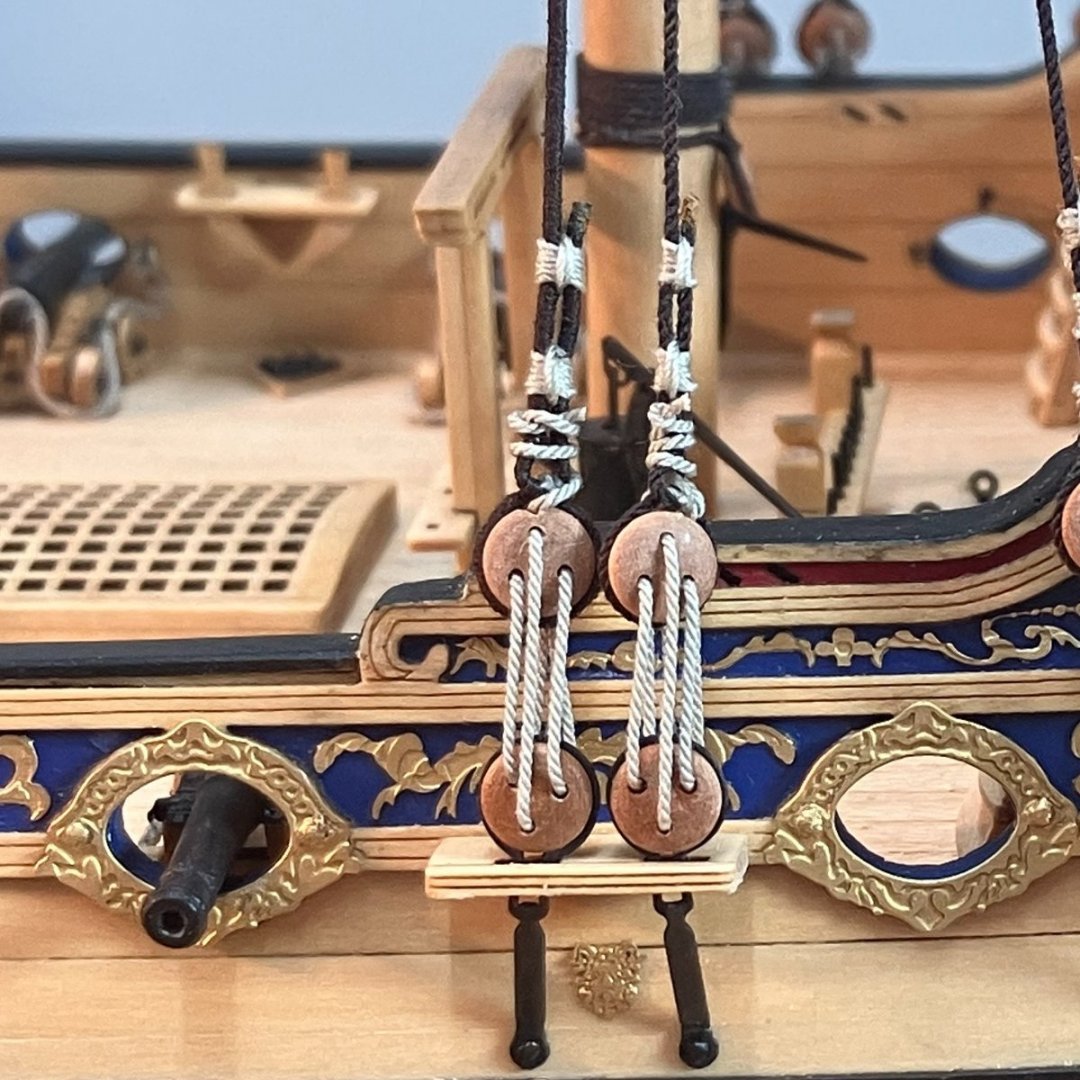-
Posts
1,409 -
Joined
-
Last visited
Content Type
Profiles
Forums
Gallery
Events
Everything posted by DelF
-
I find it works OK if diluted well, as I did with the anchor ropes. I tried it neat on the ratlines but it left a pale deposit so I went back to using shellac.
- 345 replies
-
- Duchess Of Kingston
- Vanguard Models
-
(and 1 more)
Tagged with:
-
Thanks Tim, much appreciated. You're right, I use Mara for all my rope now. This link to an earlier post describes how I made the anchor cable from Mara #70. I haven't looked back since I started using Mara, and I certainly don't miss all the dyeing I had to do with the threads I previously used for rope making! Derek
- 345 replies
-
- Duchess Of Kingston
- Vanguard Models
-
(and 1 more)
Tagged with:
-
Thanks for the kind words Glenn. Mmm...not sure I'm totally convinced. However if a perfectionist like you thinks the ratlines look OK I really ought to stop fretting about them. Thanks again!
- 345 replies
-
- Duchess Of Kingston
- Vanguard Models
-
(and 1 more)
Tagged with:
-
Well done Rusty - superb model!
- 201 replies
-
- Duchess of Kingston
- Vanguard Models
-
(and 1 more)
Tagged with:
-
Just catching up Glenn - she's looking really good! Derek
- 476 replies
-
- sphinx
- vanguard models
-
(and 1 more)
Tagged with:
-
Like B.E., I ran out of superlatives to describe your Winchelsea some time ago. I'm not sure the bar you're setting could get much higher. Derek
- 840 replies
-
- winchelsea
- Syren Ship Model Company
-
(and 1 more)
Tagged with:
-
Anchor cables and lower ratlines After a considerable break occasioned by holidays, visitors and other distractions I'm finally back in the workshop. As mentioned in my last update, I brushed some dilute (50:50) PVA on the anchor ropes and held them to the deck with small weights while they dried. I think the result has them lying more naturally: Next, it was on to the lower ratlines. The less said about these the better. This is the fifth fully rigged model I've tackled and I would have hoped to improve my ratlines over that series. To my critical eye the Duchess is marginally better than my first model, but no better than the other three. In fact in some ways it's worse, as I found it very difficult to span the very wide gaps in the fore and main shrouds neatly. Using Mara #100 line I started off rigging every fifth 'rung' as well as I could... ...but then found it impossible to maintain this level of neatness as I filled in the gaps: I just hope the ratlines won't catch the eye quite as much when the rest of the rigging is in place. One of these days I'll get it right - as the song says, "Things can only get better"! Despite being somewhat disappointed with the ratlines, I'm enjoying getting back to the workshop. Derek
- 345 replies
-
- Duchess Of Kingston
- Vanguard Models
-
(and 1 more)
Tagged with:
-
Thanks Glenn! Unfortunately I don't play golf. I'll try and persuade Karen to ditch half her clothes on the way back - that should give me room for about 20 or 30 pounds of timber 😁
- 345 replies
-
- Duchess Of Kingston
- Vanguard Models
-
(and 1 more)
Tagged with:
-
Anchor cable This will be my last post for a while as we fly to Vancouver tomorrow for the start of our Alaska cruise - subject to Covid testing, which is still a requirement for cruise passengers. As a last little job before departure I managed to find some more displacement activity to avoid ratlines until our return. I wanted to fit the anchor cables before the deck became too cluttered so I set up the Rope Rocket to make my own. I felt the kit line was too heavy at 2mm. According to the usual references the circumference of a ship's bower anchor cable was 0.62 times the diameter of the main mast. So with an 8mm main mast the cable would be 4.96mm round and therefore 1.58mm in diameter. After some trial and error I made a length of 4-strand rope, each strand consisting of five lengths of Mara #70, given a final diameter of 1.50mm which I felt was close enough. I always prefer to go under rather than over-scale. I should add that I only set the ropewalk up to produce one metre of rope - no point wasting material! Here's the result, and a comparison with the kit rope: I threaded the cable through the hatch, then dry-fitted it to the deck to check it looked OK and would thread through the hawse holes: I'm quite happy with that, so on return I'll dampen the cable down with some very dilute pva and hold it down with small weights while it dries. I'm off to pack that saw so I cut smuggle some of that Alaskan Yellow Cedar 😁. Derek
- 345 replies
-
- Duchess Of Kingston
- Vanguard Models
-
(and 1 more)
Tagged with:
-
Yes, I use a heat gun to ‘set’ the rope and stop it tending to unravel. Some people bake their rope in an oven but I find the heat gun works fine for small quantities. When I cut it from the rope walk I knot each end to stop it unravelling, wind it into a hank, put the hank in the bottom of a glass jar to stop it blowing away then blast it for about a minute. I should stress that I use a crafter’s hot air gun, not the really powerful type used for stripping paint! After heat treatment the rope is no different, except it won’t unravel. Making your own rope is easy and satisfying, as the stuff you make yourself will be better than most kit material. I used to dye my rope as well but that was time consuming, messy and a bit hit and miss, at least for me. I’m glad I got onto Gutermann Mara thanks to Chuck’s post. Derek
-
Hi Jonathan I use Gutermann Mara thread for all my rope, having read Chuck Passaro's description of it (see here for more information). Chuck's Syren Rope Rocket is great for running up your own rope, and like you I use the Syren machine for serving. For the latter I use the thinnest Mara thread I could find - #150. You can use black if you wish but personally I prefer very dark brown, partly for realism (the Stockholm tar used on standing rigging was not black) and partly because pure black looks too stark to my eye. Details of the colours I use are in the link. Here's some pictures of the serving line in use, to illustrate how it can create an eye: Hope this helps Derek
-
Going for those extra details helps to turn a good model into a great model. Derek
- 855 replies
-
- Sphinx
- Vanguard Models
-
(and 1 more)
Tagged with:
-
You're both very welcome. I've learnt a great deal from this forum and I enjoy sharing my own efforts. Derek
- 345 replies
-
- Duchess Of Kingston
- Vanguard Models
-
(and 1 more)
Tagged with:
-
It's full of junk (aka items waiting to be repurposed). Ironically, the scrap steel came from my wife. She was upgrading a die cutting machine (one of her craft tools - she's nearly as bad a toolaholic as me) so I stripped her old one for useful parts. I found several useful heavy lumps of steel, all now pressed into service: Kind of you to say so Glenn. Coming from a master planksmith that's much appreciated. I enjoy trying to improve, but there's still a few people on the forum who's work I'd like to match. Derek
- 345 replies
-
- Duchess Of Kingston
- Vanguard Models
-
(and 1 more)
Tagged with:
-
Futtock staves & lower mast stays Before getting on with the ratlines I realised I needed to fit the futtock staves. Those fitted, I then decided to fit the lower mast stays while access was still reasonable. Also, given the extreme rake of the mizzen mast I was concerned that without the lower stay in place it was leaning too far back and touching the binnacle. I think I picked up the method for fitting the futtock staves from @glennard2523. Much easier to hold a long length of brass rod against the shrouds than trying to seize a short piece. When I'm rigging on the ship I find it better to take the quadhands off their big base and use them individually - in this photo the one holding the brass rod is stuck to a heavy piece of scrap steel: I made the stays on my Syren ropewalk and serving machine. The upper part of each lower stay would have been served to about six feet below the mouse. I dry fitted each stay to judge this distance then served them using Gutermann Mara #150, leaving a long length of serving line free at the end where I wanted to form the eye. I cut this end at an angle: ...made a loop in the end, held by a clamp: ...wound the excess serving line round and soaked the join in dilute PVA: ...and trimmed to produce the eye: I made the mice (mouses?meeces?) on the Proxxon lathe from a wooden rod with a hole drilled through the middle: I shaped each mouse using small turning tools (as described in my Speedy log, here) and files, aiming for an outside diameter about three times that of the stay. I secured the mouses in position using pva, and when set rigged the lower end of each stay using deadeyes and lanyards exactly as for shrouds. Here's the main preventer stay rigged to the foremast with the mainstay visible just above it. ...and all the lower stays rigged: One minor point of interest is the fore preventer stay, which I thought should normally sit above the forestay. Chris's plans show it below, and when I checked Rigging of English Ships of War Lees notes that this was sometimes the case on smaller ships. I should have known - Chris is usually right! On to the ratlines (unless I can discover some more displacement activity ) Derek
- 345 replies
-
- Duchess Of Kingston
- Vanguard Models
-
(and 1 more)
Tagged with:
-
Truly beautiful Glenn. I've never seen a better planking job - you've set the bar very high! Derek
- 840 replies
-
- winchelsea
- Syren Ship Model Company
-
(and 1 more)
Tagged with:
-
Those crowsfeet look superb. I always think they add great interest to a model.
- 201 replies
-
- Duchess of Kingston
- Vanguard Models
-
(and 1 more)
Tagged with:
-
Shrouds We've had friends visiting followed by a holiday in North Wales so I've had little time with the Duchess this month. However I've just finished the shrouds and can now look forward (?) to a few days of fun with ratlines. Thank you for your kind compliments David. I would encourage you to have a go at the seizings I use on the shrouds - I think the two crossing turns neaten the end result and add to the authenticity, and I don't believe they need to be too difficult. On Speedy I started trying to replicate full-size practice, using this method: However, I eventually decided it was too bulky (and time consuming!) and developed a simpler version which I described here in the log. With practice this method becomes quite quick and straightforward, and I'm reasonably pleased with the results on the Duchess: I still think the 0.5mm lanyards look slightly heavy in close ups, but they're OK at a distance. Roll on those ratlines! Derek
- 345 replies
-
- Duchess Of Kingston
- Vanguard Models
-
(and 1 more)
Tagged with:
-
That's reassuring. I just thought the ones with wonky holes didn't look like the usual Vanguard deadeyes.
- 855 replies
-
- Sphinx
- Vanguard Models
-
(and 1 more)
Tagged with:
-
Those deadeyes certainly don't seem up to the quality we've come to expect from Vanguard - those I've used on Speedy and Duchess have all been perfectly symmetrical and consistently sized. Sourcing quality components must be a nightmare for Chris.
- 855 replies
-
- Sphinx
- Vanguard Models
-
(and 1 more)
Tagged with:
-
Very well done David - a beautiful model. Derek
- 91 replies
-
- Speedy
- Vanguard Models
-
(and 1 more)
Tagged with:
-
Very helpful thanks. I think a final decision may depend on how neatly I can rig the wider ratlines. They have the potential to look very messy. Derek
- 345 replies
-
- Duchess Of Kingston
- Vanguard Models
-
(and 1 more)
Tagged with:
About us
Modelshipworld - Advancing Ship Modeling through Research
SSL Secured
Your security is important for us so this Website is SSL-Secured
NRG Mailing Address
Nautical Research Guild
237 South Lincoln Street
Westmont IL, 60559-1917
Model Ship World ® and the MSW logo are Registered Trademarks, and belong to the Nautical Research Guild (United States Patent and Trademark Office: No. 6,929,264 & No. 6,929,274, registered Dec. 20, 2022)
Helpful Links
About the NRG
If you enjoy building ship models that are historically accurate as well as beautiful, then The Nautical Research Guild (NRG) is just right for you.
The Guild is a non-profit educational organization whose mission is to “Advance Ship Modeling Through Research”. We provide support to our members in their efforts to raise the quality of their model ships.
The Nautical Research Guild has published our world-renowned quarterly magazine, The Nautical Research Journal, since 1955. The pages of the Journal are full of articles by accomplished ship modelers who show you how they create those exquisite details on their models, and by maritime historians who show you the correct details to build. The Journal is available in both print and digital editions. Go to the NRG web site (www.thenrg.org) to download a complimentary digital copy of the Journal. The NRG also publishes plan sets, books and compilations of back issues of the Journal and the former Ships in Scale and Model Ship Builder magazines.


